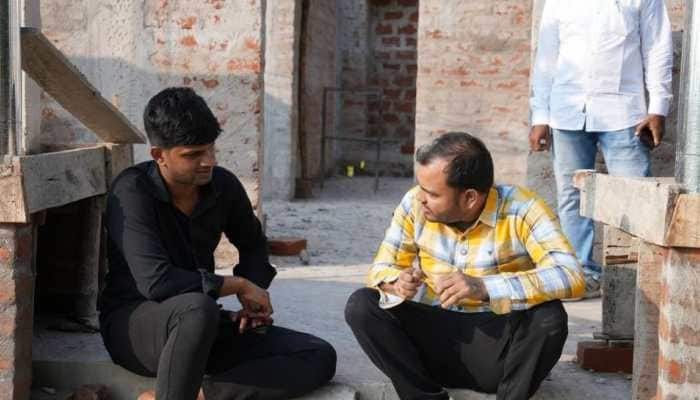Air quality in Delhi worsens post Diwali: Six steps to keep safe!
The levels of PM10 particulates, which are very hazardous to health, rose to 2,000 micrograms per cubic metre, on Wednesday night..
Trending Photos
)
New Delhi: Pollution rose to hazardous levels in the national capital post Diwali celebrations, reaching 40 times the limit recommended by the World Health Organisation (WHO) and leaving the city dwellers at the risk of respiratory problems.
Also Read: Delhi's pollution level 23 times higher than normal, air quality to worsen in coming days
The levels of PM10 particulates, which are very hazardous to health, rose to 2,000 micrograms per cubic metre, on Wednesday night, November 11.
As per data provided by Swedish premium air purifier maker Blueair, the PM10 (particles with a diameter of 10 microns or less) touched a high of 2,000 mg/cubic meter in areas of the city, which is about 7 times the national safe standard.
Also Read: Check out: Real-time Air Quality Index Visual Map post Diwali in Delhi
PM10 levels above 300mg/ cubic meterare considered “hazardous” to health, by national ambience air quality standard. This year, the PM10 level has increased 33% compared to last year’s level of 1,500 mg/cubic meter.
The data is provided by the company’s mobile app called Blueair Air Quality Monitor. The app provides real-time air pollution information gathered from a host of monitoring stations in India cities such as Delhi, Mumbai, Hyderabad, Chennai and Kolkata.
So here are six things Blueair advises in order to avoid the city’s poisonous air during this festive season:
Wear an anti-pollution mask - Plain surgical masks alone won’t do. One should use hi-tech masks such as N95 to prevent breathing in very small particles. ‘N95’ means that when subjected to testing, the respirator blocks at least 95% of very small test particles. However, it does not completely eliminate the risk, as it still can’t filter poisonous gases like nitrogen dioxide, carbon monoxide and ozone, which are all on the rise in the Indian capital.
Avoid outdoor workouts - Breathing heavily during that cardio workout will draw pollution deeper into the lungs, increasing the chances of respiratory ailments. Hence, outdoor exercise should be avoided at least until levels drop below the prescribed limit.
Get out of town- Till the Diwali pollution comes under control, Delhiites can head out of town to escape the smog. If looking for an excuse to leave Delhi during this festive season, this is the best time for the families, particularly those suffering with breathing problems and with younger children. Take a break to the hills and wildlife sanctuaries to get a breath of fresh air.
Have foods and drinks rich in antioxidants- There is yet another reason to eat fruits and veggies, a diet rich in vitamin-C, which can lessen the effects of air pollution. Researchers have found that people with low levels of vitamin C have an increased risk of breathing problems. So, deep-colored fruits and vegetables such as berries, tomatoes, carrots, broccoli, apples and plums that are packed full with antioxidants are good for you. Even green tea, cinnamon, pomegranate, and citrus fruits like oranges, have a powerful antioxidant effect.
Use an indoor air purifier - Gone are the days when we could open our windows and take a deep breath, so we need to create safe havens at home or work. A study released by WHO has named Delhi as the most polluted city in the world.
We can wear face masks when out, roll up the windows of our cars or simply lock ourselves at home. However, according to studies, the air inside our homes can be 2-5 times, and occasionally, more than 100 times higher than outdoor levels. So the easiest option is to use an air purifier at home. It can help protect us from various diseases caused by air pollution such as asthma, chronic obstructive pulmonary disorder and lung cancer among others.
Use public transportation - Using public transportation is the best way of improving any city’s air quality. According to the Delhi-based Centre for Science and Environment, car emissions account for around 75% of the capital’s pollution and on an average 1,000 new cars are added to the city each day. Hence, over the years, there is no significant improvement in the number of people using public transportation, despite the government’s attempts to upgrade infrastructure in Delhi.
Stay informed on all the latest news, real-time breaking news updates, and follow all the important headlines in india news and world News on Zee News.
Live Tv







)
)
)
)
)
)
)
)
)
)
